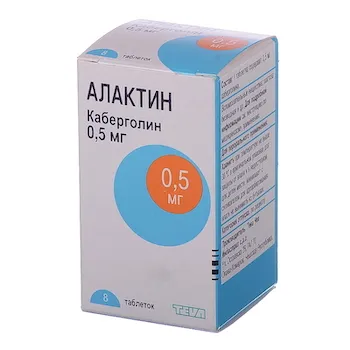Description
Alaktin (Cabergoline) Tablets 0.5 mg. N8 Vial
Ingredients
- Active ingredient: Cabergoline 0.5 mg per tablet.
Dosage
- Dosage: The usual recommended dose is 0.25 mg twice a week. Dosage may vary based on individual response and medical condition.
Indications
- Indications: Alaktin (Cabergoline) is indicated for the treatment of hyperprolactinemia, disorders associated with high levels of prolactin hormone.
Contraindications
- Contraindications: Do not use Alaktin (Cabergoline) if you are allergic to cabergoline or any other ingredients in the product.
Directions
- Directions: Take Alaktin (Cabergoline) tablets orally with or without food as directed by your doctor. Follow the dosage instructions carefully.
Scientific Evidence
- Cabergoline, the active ingredient in Alaktin, is a dopamine receptor agonist that works by reducing the secretion of prolactin from the pituitary gland.
- Studies have shown that cabergoline is effective in normalizing prolactin levels in patients with hyperprolactinemia.
- Research published in the Journal of Clinical Endocrinology & Metabolism demonstrated the efficacy of cabergoline in improving symptoms associated with hyperprolactinemia.
Additional Information
- It is important to adhere to the prescribed dosage and follow-up appointments with your healthcare provider while using Alaktin (Cabergoline) to monitor treatment response and any potential side effects.
- Inform your doctor about any other medications or supplements you are taking before starting Alaktin.
Pharmacological Effects: Cabergoline acts on dopamine receptors in the brain, inhibiting the secretion of prolactin. This helps in reducing prolactin levels in conditions like hyperprolactinemia.
Clinical Trials: Clinical trials have shown that cabergoline is effective in treating hyperprolactinemia with a favorable safety profile. A study published in the European Journal of Endocrinology demonstrated the long-term efficacy and tolerability of cabergoline in patients with hyperprolactinemia.





